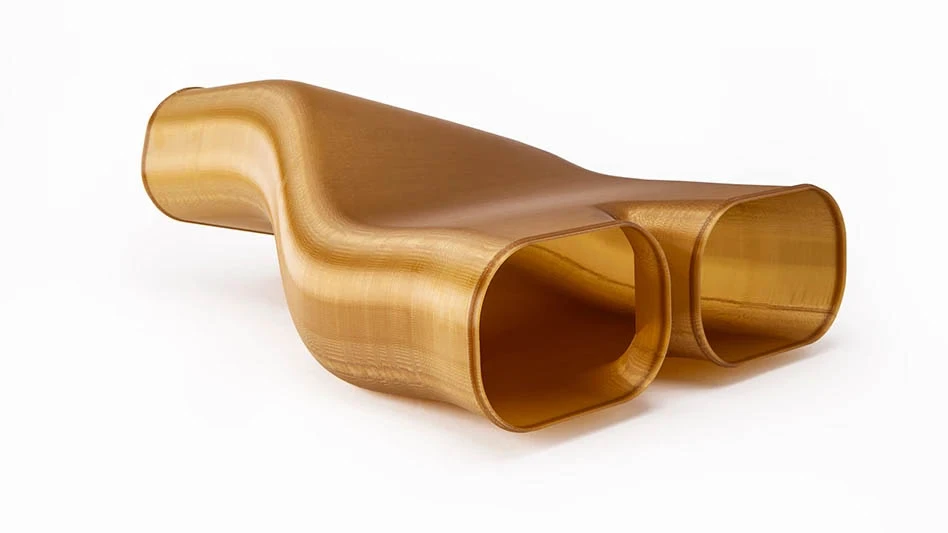
Capital investments on machine tools often come with some heavy baggage.
While short term gains are measurable and impactful, the use of a proprietary system may close the door for future system improvements.
The challenges of today's aerospace industry create a need for smarter, more flexible solutions. Open architecture control systems provide a platform for customization and ongoing upgrades that provide users with the kind of controls they need to maximize lean performance. This keeps the door open for continuous process improvement, greatly increasing the lifetime return on investment.
Any machine tool can cut metal, but one of the keys to improving the process is to capture and analyze the data associated with the processing and cutting. The control can play a critical role in being able to capture that data. A Windows-based, open-architecture system provides connectivity, traceability and adaptability. This enables endusers to improve processes, impart management control, reduce costs and improve quality.
All machine controls allow you to operate the machine. However, machine functionality provides only one part of the production picture. To truly improve machine tool performance, it is essential to have the ability to control and upgrade the various inputs in order to impact the overall manufacturing or cutting capabilities of the machine.
Control of Controls
THINC (The Intelligent Numerical Control) is the aerospace industry's first limitless control platform that grows with emerging technology, even after a machine is on the factory floor. Its true PC-compatible motherboard runs all aspects of the machine, including real-time motion as well as all Windows applications. Because of its single processor design, it can easily be swapped to remain technically current over time. Memory can be upgraded independently by the enduser, eliminating expensive memory options and providing the ability to use any preferred off-theshelf technology. The standard PC compatible Ethernet and multiple USB ports at the motherboard allow easy integration between the factory floor and corporate communications channels, allowing for a paperless environment and data acquisition, plus easy integration of computer and industrial peripherals.
How is THINC different?
CNC capability is frozen in time and obsolete the day the customer takes delivery.
The THINC open architecture platform will grow with technology, allowing it to adapt to changing customer requirements.
Anything that runs on a Windows system can run on a THINC platform.
Traditional CNC design is a static reflection of the customer's needs, as perceived by a corporate development organization.
This limits growth over time. Now, an open and fluid platform can allow the enduser to take advantage of new capabilities as they become available from various sources, without a costly CNC control overhaul. Expansion of capabilities over time can be made using off-the-shelf, or even custom, solutions.
The result is a dynamic control platform that provides optimization efficiencies resulting in a distinct competitive advantage.
Requiring Connectivity
By connecting various programs, equipment and information, layers of intelligence can be added, allowing for collection and analysis of data. This provides the tools needed to make informed decisions about process improvements.
Open architecture controls, such as THINC, provide a link between the machine, the human and the information components of manufacturing. THINC enhances the ability of the machine to cut parts by interfacing, via Ethernet cable or USB connection, with peripheral equipment, accessories and information sources.
The ease of connectivity and the ability to read and process information reduces the need for redundant inputs, minimizes human intervention, and provides security controls.
Demands for Traceability
Traceability of products and processes is important in many industries for a variety of reasons: compliance with regulatory directives, product recall risk aversion, quality intelligence, or to build customer trust.
Especially with government regulations in the aerospace industry - whether it be commercial aircraft or military - there is a high demand for traceability. With the THINC control, it is possible to trace things such as the origin of raw materials, what tool was used, which operator was running the machine, at what time the parts were made, on which machine the parts were made, etc.
Adaptability
Storing and processing data on the control (using API) provides the capability to adapt to various manufacturing environments, formats and philosophies. Each part program may require a different level or routine of measurement, and the THINC control can flexibly adapt to these requirements.
Even if you have an FMS with multiple pallets and multiple part programs, each can be custom handled. From statistical process control (SPC) to 100% inspection, the control will adapt.
Touch-sensitive probing is used to gage, measure and verify key features on a part. If a part is found to be out of spec, a variety of actions can occur:
- A flag or alarm can be triggered
- In pre-process situations, geometry can be identified and adjustments made to avoid damage to the tool or machine
- Part rejection
- Reworking of the part
- Other human intervention to determine cause and resolution
Applying predetermined parameters, the control makes adjustments such as decreasing the depth of cut when an increase in horsepower is detected, or increasing the feedrate with a decrease in horsepower.
Monitoring and measurement through the control provide endusers with robust, adaptable tools to reduce waste and downtime.
Open Architecture
Given the challenges and demands faced by today's aerospace industry, incremental process modifications are inadequate to produce the scale of efficiencies needed to remain viable. A seed change that shatters the traditional silo model of doing business is not only needed, it is inevitable.
Open architecture is based on a philosophy of removing the barriers, limitations and planned obsolescence imposed by proprietary systems. It places focus on continuous improvement of control systems by allowing ongoing incorporation of best-in-class upgrades. This involves opening the door to connectivity, which has traditionally been viewed as risky. The truth is, it allows all parties to focus resources on expanding performance continuously.
THINC's open, integrated control system maximizes machining efficiency via a real-time adaptive control.
TRACEABILITY MINIMIZES EROR
Traceability was a key issue for a customer that needed to perform post-process testing on raw material they were making. Utilizing the power of the THINC control, an application interface was customized to allow the operator to utilize the machine control to pull data from the company's network into the machining program. The interface calculates all the tool offsets and calibrations required to perform the cutting operation. Raw material data (from the network) automatically populates specified fields and prints the data onto labels via a label printer connected to the control. The machining program includes an operation that engraves an identification number on to the part - the same number that prints onto the label that is applied to the bag in which the finished cut part is placed. The THINC control and the associated interface minimized human inputs and thus human error, providing traceability and powerful control data.
By increasing productivity and improving quality, overall cost per part is reduced.
Combine the THINC control with the power, stability and accuracy of the Okuma machines, and manufacturers have the ability to cut nearly any part imaginable - opening up profitable new markets.
Okuma America Corp.
Charlotte, NC
okuma.com

Explore the October 2009 Issue
Check out more from this issue and find your next story to read.
Latest from Aerospace Manufacturing and Design
- NASA selects instruments for Artemis lunar terrain vehicle
- Twin-cutter boring head
- Bell awarded funding for X-plane build phase of SPRINT program
- Shaft coupling clamps
- #46 Lunch + Learn Podcast with SMW Autoblok
- Gleason Corp. acquires the Intra Group of Companies
- Thread milling cutter reduces cutting pressure, vibration
- Malaysia Aviation Group orders 20 more Airbus A330neo widebodies





